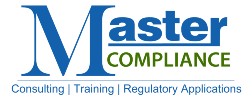Individuals and companies desire to start a broker-dealer for many reasons including to facilitate sales, create an entry point for foreign financial institutions, or be a part of a larger financial plan.
Some of the benefits to starting a broker-dealer (vs. purchasing an existing one) include saving money on due diligence, having no prior regulatory or financial issues, and the ability to customize it to fit your desired products and business lines. If you are looking for more pros and cons to starting vs. Buying a broker-dealer, read one of our recent posts on the topic “here”.
If you decide to start a broker-dealer, understanding the key requirements of the Securities and Exchange Commission (“SEC”), Financial Industry Regulatory Authority (“FINRA”) and other regulatory bodies are vital . Since there are categories of broker-dealers, each with their own net capital requirements and business activity structure, we will focus on the key requirements of the application process.
Business Plan
The business plan is the first step in the process of starting a broker-dealer. Unlike a business plan that you may prepare for a bank loan or private funding, this business plan requires information on the types of business lines, client base, partnerships, affiliated entities, and flow of funds and securities. Information on the ownership structure and bios of management and key parties are also required and includes industry and supervisory experience (both direct and indirect).
Application Forms
FINRA and SEC specific forms are also an important part of the process. These forms start the application process. The name reservation is a form required by FINRA to review and approve all proposed names for firms applying for FINRA membership and for current FINRA member firms seeking a name change. The Form BD (“Form Broker-Dealer”) collects information on the Firm including business lines, affiliates, ownership structure, entity structure and more. The Form BR collects information on additional offices (branches). The Form U4 collects composite information for each associated person including contact, employment, registrations, and disclosures.
The Form NMA (“New Member Agreement”) is the foundation of the application process. This application requests not only the information in the business plan but also copies of agreements, LOI’s, organizational charts, financial statements, policies, and other supplemental material based on the type of broker-dealer opened.
Once Form NMA is submitted, FINRA has 180 days to approve or deny membership.
Supervisory Principals
The application requires at least 2 supervisory principals and at least one financial and operations principal (“FinOP”). All principals must be experienced and qualified and the Firm must provide documentation through bio’s and the firm’s organization chart. The supervisory principals are responsible by virtue of their licenses to create and enforce the policies and procedures of the Firm including administrative, business, products marketing, trading etc. The most common license is the Series 24 and one of those must be designated the Chief Compliance Officer (“CCO”) for the application. FinOP’s are responsible for creating and reporting certain accounting and financial statements and filing FOCUS reports. The most common license is Series 27 (if a firm wants to do self-clearing) or Series 28.
Vendor Setups and Partnerships
Firms must provide certain key vendor information (including contracts and LOI’s) for the application. Firms must determine what tools, systems and support you will need to comply with the policies and procedures and regulatory requirements. You either buy these tools and systems or build them internally. Many Firms outsource electronic storage, fidelity bond, PCAOB auditor, compliance support, IT support, business and compliance software, to qualified vendors.
Policies and Procedures
All new member applicants must have reasonably designed written supervisory procedures (WSPs) to supervise the activities of its associated persons and the types of businesses in which it engages. A firm’s WSPs must address supervision of supervisory personnel and provide for the review of a firm’s investment banking and securities business, correspondence and internal communications, and customer complaints. WSPs should describe:
- the specific individual(s) responsible for each review,
- the supervisory activities such persons will perform,
- the frequency of the review, and
- the manner of documentation.
As part of the new member application process, applicants are required to submit a completed WSP Checklist (you can review it HERE), together with a copy of their Written Supervisory Procedures (“WSPs”). The Broker-Dealer Written Supervisory Procedures Checklist (“WSP Checklist”) is an outline of selected key topics representative of the range of business activities typically proposed by applicants seeking approval to become FINRA members or to expand their existing securities business under FINRA Membership and Registration Rules.
Other Resources
FINRA- How to Apply
SEC- Guide to Broker-Dealer Registration
Note: per the SEC’s guidance, If you will be acting as a “broker” or “dealer,” you must not engage in securities business until you are properly registered. If you are already engaged in the business and are not yet registered, you should cease all activities until you are properly registered.
Unless you have expertise and experience with the application and registration process, you should consider professional support. With decades of experience, our team can provide specialized support to start your own broker-dealer, contact us today.

